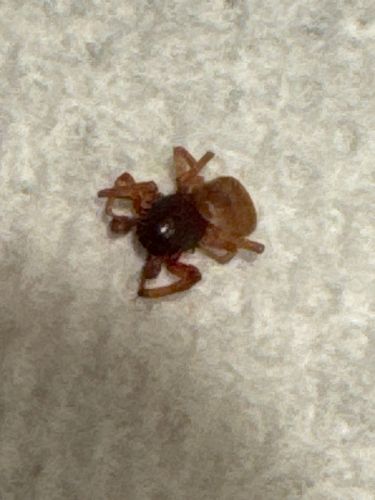Ground Spider
Scientific Name: Various species within the family Gnaphosidae (e.g., Scotophaeus blackwalli, Herpyllus ecclesiasticus)
Order & Family: Order: Araneae, Family: Gnaphosidae (and potentially other families like Corinnidae or Clubionidae which share similar appearances and behaviors)
Size: Typically 3 to 18 mm (0.1 to 0.7 inches) in body length, depending on the species.

Natural Habitat
Ground spiders are commonly found on the ground level in various habitats, including forests, grasslands, deserts, and urban environments. Indoors, they may be found in basements, crawl spaces, and ground-level rooms, often hiding under furniture, boxes, or in clutter.
Diet & Feeding
Ground spiders are predators, feeding primarily on other spiders and insects, including beetles, ants, and other small arthropods. They use their speed to ambush and overpower prey.
Behavior Patterns
Ground spiders are nocturnal hunters, actively searching for prey rather than building webs for capture. They are fast runners and can be found scurrying across floors or walls, especially at night. During the day, they hide under rocks, logs, leaf litter, or in cracks and crevices. Females lay eggs in a silk sac, which they often guard. Some species exhibit social behaviors, while many are solitary.
Risks & Benefits
Ground spiders are generally considered harmless to humans. While they possess fangs and venom, their bites are rare and typically result in a mild, localized reaction similar to a bee sting, with no serious medical implications. They are beneficial as natural pest control, preying on various insects and other spiders.
Identified on: 8/20/2025